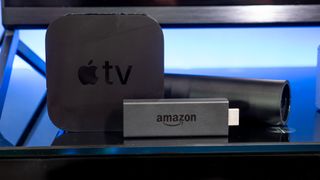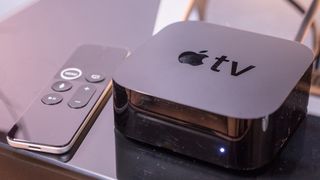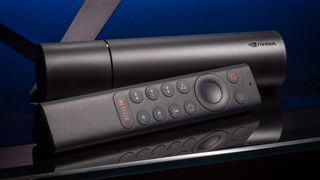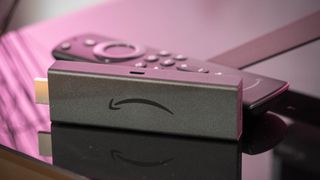
When it comes to streaming movies and shows, there's a world of hardware available. It's dizzying. We don't blame you if you don't know where to start. There are boxes and dongles and sticks. There are televisions with streaming capabilities built-in. It really comes down to details.
Do you want the most powerful? Or do you want the most affordable? (For our money, it's worth splurging. This is something you're going to use every single day.) Do you want Apple? Or Android? Or Amazon? Or Roku? And even then, which model do you get? There are a whole host of streaming devices out there and more features and specs to confuse matters.
What do we look for? Consistency. We look for a good, fast overall experience. We look for hardware whose software is kept secure and up to date, with regular improvements.
Here, we boil things down to just four models. The best streaming hardware you can buy. We've got two premium options that are the best of the best and we've got a couple of budget options that also get the job done very well — just not as well as the more expensive pieces.
Happy streaming.

Reasons to buy
Reasons to avoid
If you want the best streaming hardware you can get and aren't all that concerned with the cost, you want the Apple TV 4K. You don't even have to be a complete Apple fan to benefit from it. (But you'll be able to take advantage of more features if you're using an iPhone, iPad or Mac — like the ability to use your phone or iPad for on-screen typing, or AirPlay to stream content not immediately available on Apple TV itself.)
Apple TV 4K hits all the specs you want in modern streaming hardware. It handles 4K resolution. It supports Dolby Vision HDR and Dolby Atmos audio. (The former requires a display that also supports Dolby Vision, and the latter requires an audio setup that supports Dolby Atmos.) Not once in years of ownership have I thought "This thing is slooooooow." And Apple continues to update the software in line with Its other products. Apple's content library is still as good as (or better than) the others and it has every streaming service you could want, available for download.
The biggest downsides to Apple TV 4K are the remote control (the included remote is just too small and skinny to be used comfortably) and the fact that you can get other streaming devices that do 4K resolution and Dolby Vision and Atmos for much, much cheaper.
They're just not as good is all.

2. Nvidia Shield TV Pro
Reasons to buy
Reasons to avoid
If none of the above fits your wishes — or if you're all about all things Android — you'll definitely want to consider NVIDIA Shield. It's right up there with Apple TV in terms of hardware and longevity. The latest refresh brought a couple of new features. First is that the remote control got a complete overhaul, moving from something that (like Apple TV's remote) was too small and too skinny. The new version doesn't get lost as easily — and if it does, it's got a find-my-remote feature.
The second is that Shield now has some excellent AI-enhanced 4K upscaling. For content that isn't natively presented in 4K resolution, Shield will use its powerful processing to sharpen and enhance the picture in real-time. It's very cool to see in action.
Elsewhere, NVIDIA's track record for software updates rivals Apple, which is saying something. Android TV has nearly every streaming service you want, has Chromecast built-in for those hard-to-reach services and the Google Assistant is front and center. Plus it can double as a media server and it's an excellent option for gamers — the Shield Pro for even more processing and gaming power if you're really into AAA game titles.

Reasons to buy
Reasons to avoid
"Best for everyone" is a pretty hard choice between Roku players and the best Amazon Fire Sticks. Both are inexpensive. Both hit the same specs at the same relative price points. And both have recently found themselves on the losing end of the content wars missing out on services like HBO Max and Peacock.
What sets Amazon Fire TV Stick 4K apart from Roku, however, are features like Alexa, and accessories like Amazon Fire TV Recast, which (while not inexpensive) lets you add over-the-air channels directly into your Fire TV home screen feed. Fire TV Stick 4K also supports both Dolby Vision for HDR, and Dolby Atmos for audio. (Roku only has Atmos.)
Fire TV has a pretty good remote control, making it easy to navigate the busy home screens. (There's a lot going on, but I tend to think it's done pretty well.) It has nearly all the apps you want, and probably some you didn't realize you needed. It has easy access to Amazon Photos and Amazon Music. You get a ton of free video channels included out of the box with a Prime Video subscription. (You can watch those on other manufacturers' devices, too, but Amazon presents it front and center, without needing a separate app.)
And Amazon updates its software pretty regularly.
4. Roku Streaming Stick+
Our expert review:
Specifications
Reasons to buy
Reasons to avoid
Don't overlook the Roku Streaming Stick+. If you're not going to shell out the extra money for the Roku Ultra (which is the Roku we really recommend, but comes at double the price), this is the one to look for. It costs more than Roku Premiere, but that extra cash gets you better wireless specifications — and that's important when you're talking about streaming video.
Roku Streaming Stick+ also handles 4K resolution just fine, and it does HDR 10 and Dolby Atmos for audio. But doesn't have Dolby Vision, which is the better HDR standard. Like Amazon Fire TV Stick 4K, Roku is missing HBO Max and Peacock, so take that into consideration. It does have an above-average remote control, and the user interface is extremely easy to use.
Get the What to Watch Newsletter
The latest updates, reviews and unmissable series to watch and more!
Phil spent his 20s in the newsroom of the Pensacola (Fla.) News Journal, his 30s on the road for AndroidCentral.com and Mobile Nations and is the Dad part of Modern Dad.

